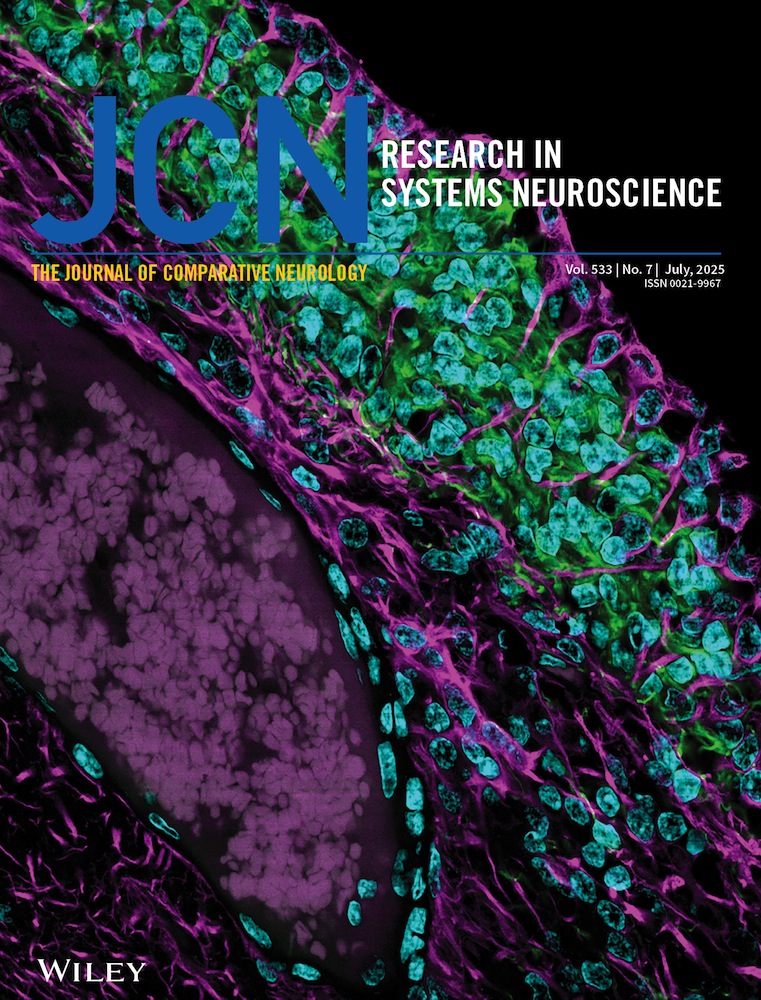Topological analysis of the brainstem of the bowfin, Amia calva
Abstract
This paper presents a survey of the cell masses in the brainstem of the generalized actinopterygian fish Amia calva, based on transversely cut Nissl-, Klüver-Barrera-, and Bodian-stained serial sections. This study is intended to serve a double purpose. First it forms part of a now almost complete series of publications on the structure of the brainstem in representative species of all groups of vertebrates. Within the framework of this comparative program the cell masses in the brainstem and their positional relations are analyzed in the light of the Herrick–Johnston concept; according to this the brainstem nuclei are arranged in four longitudinal, functional zones or columns, the boundaries of which are marked by ventricular sulci. The procedure employed in this analysis essentially involves two steps: first, the cell masses and large individual cells are projected upon the ventricular surface, and next, the ventricular surface is flattened out, that is, subjected to a one-to-one continuous topological transformation (Nieuwenhuys [1974] J. Comp. Neurol. 156:255-267). The second purpose of the present paper is to provide a cytoarchitectonic basis for experimental analysis of the fiber connectivity in the brainstem of Amia.
Five longitudinal sulci–the sulcus medianus inferior, the sulcus intermedius ventralis, the sulcus limitans, the sulcus intermedius dorsalis, and the sulcus lateralis mesencephali–could be distinguished. Some shorter grooves, present in the isthmal region, clearly deviate from the overall longitudinal pattern of the other sulci. Although in Amia most neuronal perikarya are contained within a diffuse periventricular gray, 40 cell masses could be delineated: Eight of these are primary efferent or motor nuclei, 10 are primary afferent or sensory centers, seven are considered to be components of the reticular formation, and the remaining 15 may be interpreted as “relay” nuclei.
The topological analysis yielded the following results. In the rhombencephalon the gray matter is arranged in four longitudinal columns or areas, termed area ventralis, area intermedioventralis, are intermediodorsalis, and area dorsalis. The sulcus intermedius ventralis, the sulcus limitans, and the sulcus intermedius dorsalis mark the bounderies between these morphological entities. These longitudinal areas coincide largely, but not entirely, with the functional columns of Herrick and Johnston. The most obvious incongruity is that the area intermediodorsalis contains, in addition to the viscerosensory nucleus of the solitary tract, several general somatosensory and special somatosensory nuclei. The four longitudinal zones cannot be distinguished in the mesencephalon nor can the sulcus limitans be recognized here. Functionally, however, the medial part of the tegmentum mesencephali may be considered the rostral extremity of the somatomotor column, whereas the remainder of the midbrain contains a number of somatosensory centers. © 1994 Wiley-Liss, Inc.




